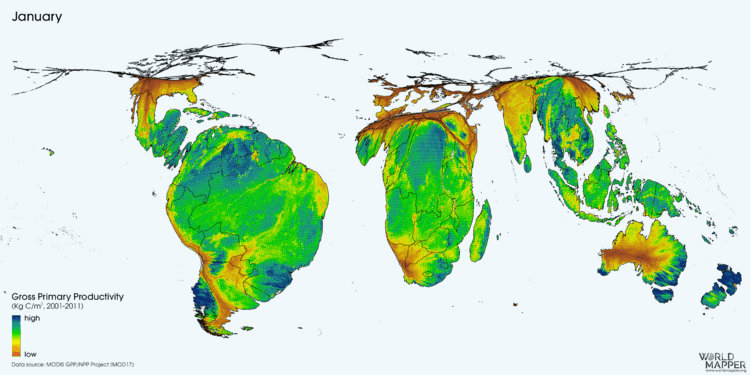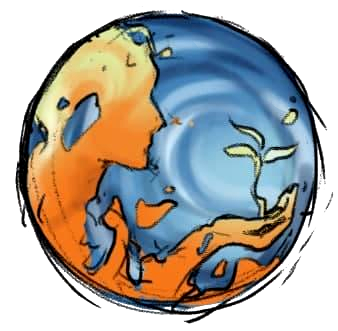Nature's Heartbeat

Nature's Heartbeat
An inspiring graphic presentation of the living currents of the Earth
No one can miss the living breathing nature of Earth in this image and continue to see it as separate from humanity. The image speaks to our essential connectedness with nature and each other.
"The metabolism of the terrestrial biosphere looks like nature’s heartbeat when seen through the lens of a gridded cartogram projection.
This cartogram animation uses satellite observations from NASA’s Moderate Resolution Imaging Spectroradiometer (MOD17) that is able to detect the cumulative composite Gross Primary Production (GPP) of the biosphere on land. This productivity is nature’s ‘fuel for life‘ as it gives us an idea of how the biosphere is utilising the sun’s energy to support its organisms, turning plants into the biomass factories that support life higher up the foodchain.
When and where nature ecosystems are most productive depends a lot on the time of the year. The animation of productivity shows how the changing seasons determine the variability of energy production throughout the year. Distribution of landmasses lead to the tropics being over-proportionally present in this image, especially in the northern hemisphere’s winter.
The following (static) map shows how the annual picture that emerges when adding up nature’s productivity throughout the year. Here it becomes clearer that not only solar radiation, but also other factors have an influence on the productivity of terrestrial ecosystems: Desert areas, such as Sahara or the Australian outback, remain small in this picture.
Image created by Worldmapper.org, 6 July 2018
